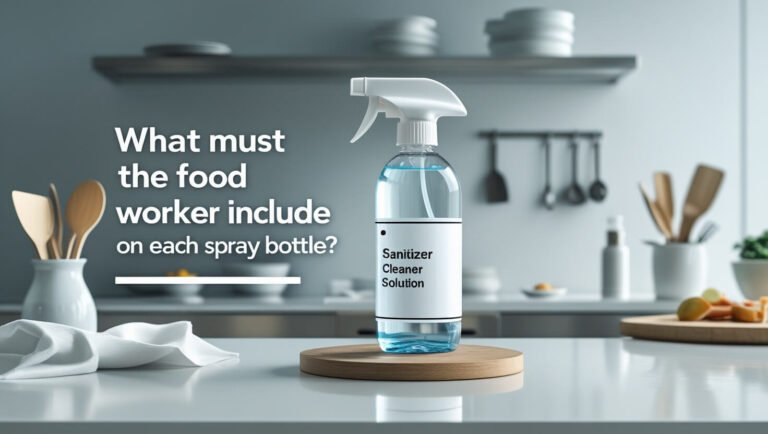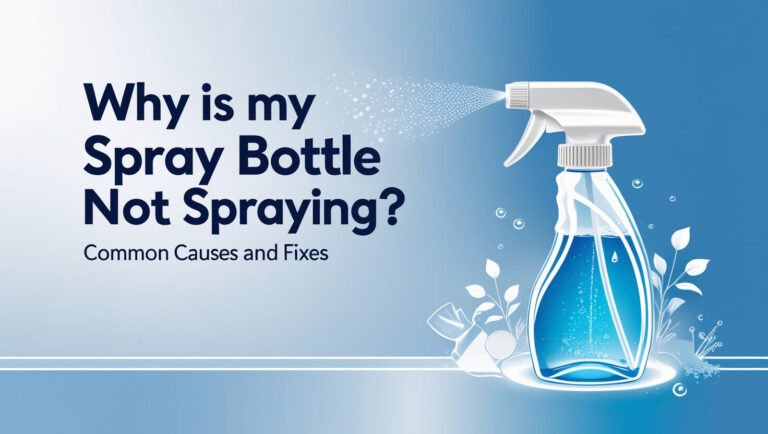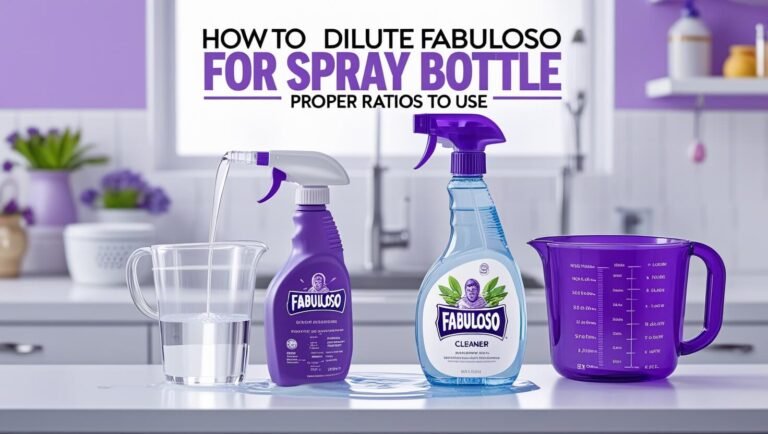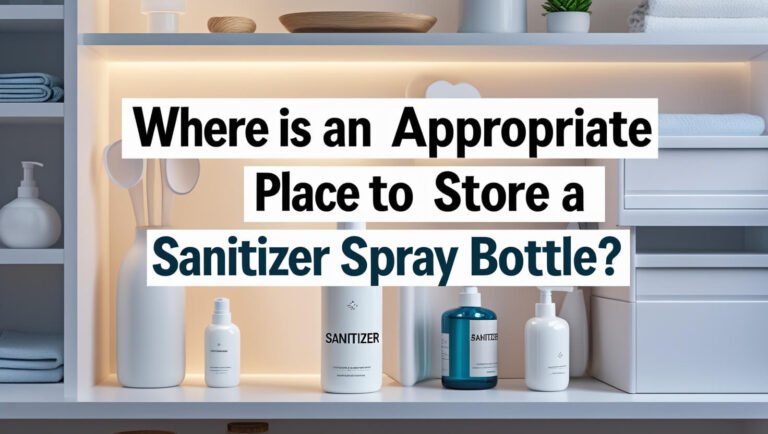How To Open Spray Bottle Nozzle: Simple Instructions
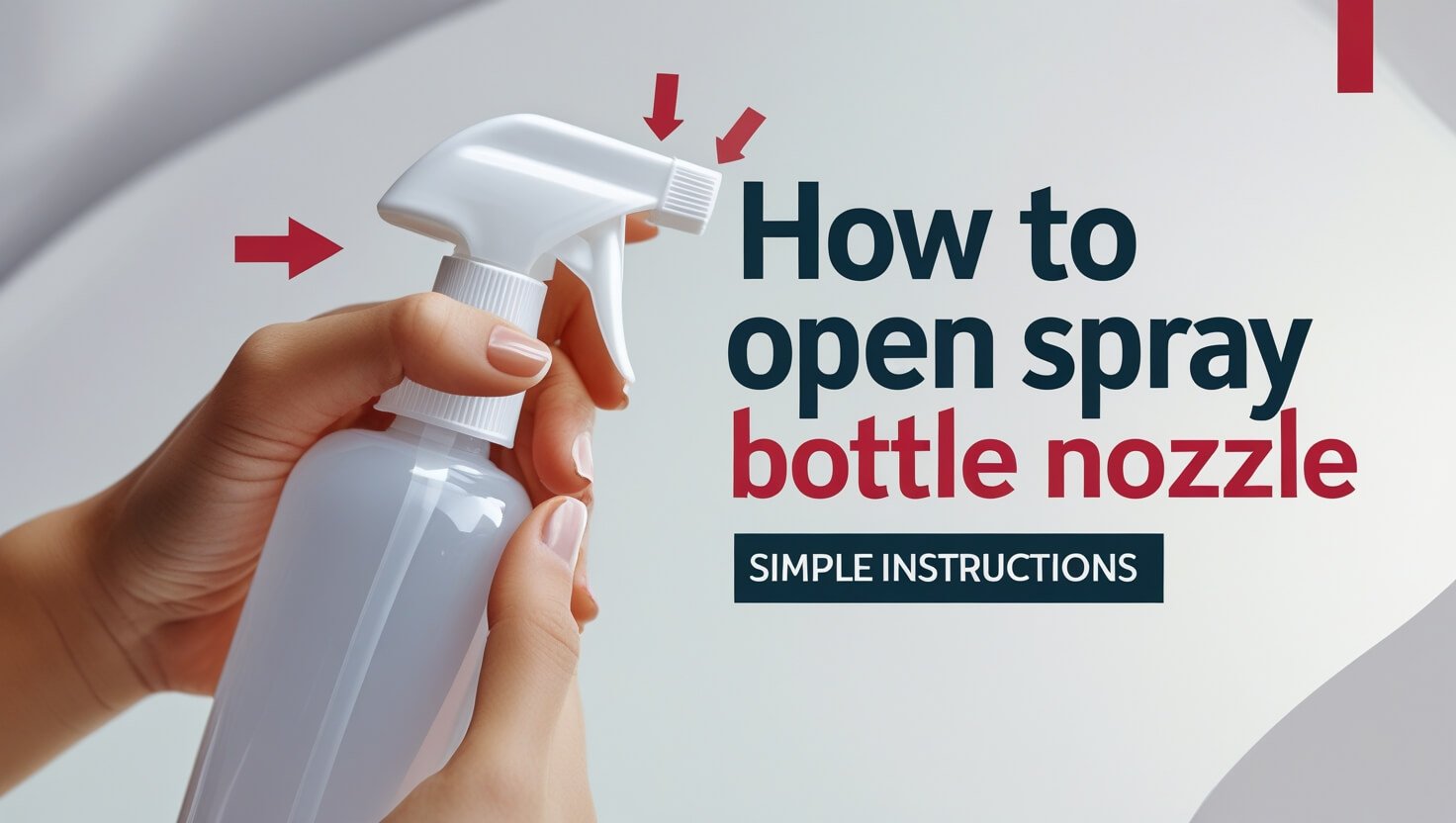
Ever had trouble opening a spray bottle nozzle? It’s stuck or clogged, and it’s really frustrating. This problem is common, like when you’re trying to use a new Bath and Body Works perfume.
So, how do you open a spray bottle nozzle without breaking it? The right way to do it can make a big difference. We’ll show you the best ways to open a spray bottle nozzle. You’ll learn how to avoid clogs and use the right tools.
Whether it’s a spray bottle or a roll-on, our guide has you covered. We’ll help you unlock your spray bottle nozzle easily.
Common Spray Bottle Nozzle Problems
Many people face issues with spray bottle nozzles. These problems can be annoying and need some fixing. Issues like stuck nozzles, clogged mechanisms, and twisted locks are common. Knowing why these problems happen is key to solving them.
Cleaning products in spray bottles often lead to nozzle clogs and failures. Nozzles can get blocked, piston seals can break, or inner tubes can get damaged. Keeping nozzles clean and storing bottles in clean places can help avoid these problems.
Identifying the Causes
To fix stuck nozzles and clogged mechanisms, knowing the reasons is important. Some reasons include:
- Improper use or handling of the spray bottle
- Poor maintenance, such as not cleaning the nozzle regularly
- Manufacturing defects or faulty design
Knowing the causes helps prevent and fix issues. Twisted locks cause problems, and fixing them avoids more issues.
Basic Spray Bottle Components
A spray bottle has several key parts, like the nozzle, valve, and actuator. Knowing these parts is key to using and keeping a spray bottle in good shape. The nozzle sprays out the liquid. The valve manages how much liquid flows through the nozzle. The actuator is what you press to let the liquid out.
Some important spray bottle components are:
- Nozzle: responsible for dispensing the liquid
- Valve: controls the flow of liquid through the nozzle
- Actuator: pressed to release the liquid
A spray bottle also has a pump, plastic tube, and one-way valves. The pump uses a moving piston to push and pull fluid. The one-way valves make sure fluid only moves in one direction.
A typical spray bottle has two one-way valves. One is between the pump and reservoir, and the other is between the pump and nozzle. This setup helps prevent liquid from coming out when the nozzle is screwed in tight.
Understanding basic spray bottle components like the nozzle, valve, and actuator helps you use and maintain it effectively for long-term performance.
Quick Solutions to Open Spray Bottle Nozzle
When your spray bottle nozzle gets stuck, it’s smart to try quick solutions first. The twist and turn method is a good start. Twist the nozzle and turn the bottle upside down. This can clear out any stuck-on debris.
Soaking the nozzle in hot water is another effective trick. It’s great for removing dried-on residue. Also, the pressure release approach can help by easing any trapped pressure in the bottle.
Try these quick solutions alone or together for the best results. They can save you time and effort. Here are some tips to keep in mind:
- Use the twist and turn method gently to avoid damaging the nozzle or bottle.
- Soak the nozzle in hot water for several minutes to loosen any blockages when using the hot water technique.
- Release the pressure slowly and carefully when using the pressure release approach to avoid any accidents.
| Method | Description |
|---|---|
| Twist and Turn Method | Twist the nozzle back and forth while turning the bottle upside down. |
| Hot Water Technique | Soak the nozzle in hot water to loosen any blockages. |
| Pressure Release Approach | Release any built-up pressure in the bottle to dislodge the nozzle. |
Tools Required for Stubborn Nozzles
Dealing with stubborn nozzles needs the right tools required to open them. Pliers and nippers are key tools. They help grip and twist the nozzle or cut away clogging debris.
For some stubborn nozzles, you might need special tools. Here’s what you might need:
- Pliers for gripping and twisting the nozzle
- Nippers for cutting away debris or residue
It’s important to use these tools safely and right. This way, you avoid damaging the nozzle or nearby areas. With the right tools required and proper techniques, opening even the toughest stubborn nozzles becomes easy.
| Tool | Description |
|---|---|
| Pliers | Used for gripping and twisting the nozzle |
| Nippers | Used for cutting away debris or residue |
Safety Precautions During Nozzle Opening
When working with spray bottles, safety is key. It’s important to follow chemical handling guidelines to avoid injury. Always wear protective equipment like gloves and goggles to protect your skin and eyes.
Having a clean workspace is also important. Make sure the area is free from clutter and well-ventilated. This helps prevent accidents and keeps you safe while opening the nozzle.
Chemical Handling Guidelines
Chemical handling guidelines are there to keep you safe. They cover how to store, handle, and dispose of chemicals. Following these guidelines is vital to avoid accidents and exposure.
Protective Equipment Needs
When working with chemicals, you need the right gear. Gloves, goggles, and masks are essential. They protect you from skin and eye irritation and harmful fumes. Wearing the right equipment ensures a safe experience.
Workspace Preparation
A clean workspace is critical when using spray bottles. Remove any clutter and ensure good airflow. This preparation helps prevent accidents and keeps you safe while opening the nozzle.
Professional Techniques for Difficult Cases
When dealing with stubborn nozzles, using professional techniques is key. In tough difficult cases, getting expert advice is very helpful. Experts say using a drill or a special tool can open a stuck nozzle effectively.
Some common professional techniques for opening stubborn nozzles include:
- Applying heat to loosen the nozzle
- Using a lubricant to reduce friction
- Employing a specialized tool to grip and twist the nozzle
It’s also important to follow safety rules when tackling difficult cases. Wear protective gear and work in a clean, stable area. By using professional techniques and expert advice, you can open even the toughest nozzles. This will get your spray bottle working right again.
| Technique | Description |
|---|---|
| Drill and specialized tool | Using a drill or specialized tool to open a difficult nozzle |
| Heat application | Applying heat to loosen the nozzle |
| Lubricant use | Using a lubricant to reduce friction |
By using these professional techniques and getting expert advice when needed, you can solve even the toughest difficult cases. This will make your spray bottle work efficiently.
Maintenance Tips to Prevent Future Issues
To keep your spray bottle nozzle working well, follow a regular maintenance schedule. This includes cleaning it often, storing it right, and watching for wear. These steps help avoid clogs and other problems.
Setting up a cleaning schedule is key. Just soak the nozzle and parts in warm water for 10-15 minutes to remove buildup. For stubborn clogs, mix water and vinegar to break down mineral deposits. Also, clean the nozzle often and keep the bottle upright to keep the fine mist working and clog-free.
Best Practices for Maintenance
- Soak the nozzle and removable parts in warm water for 10-15 minutes to loosen buildup
- Use a mixture of water and vinegar to dissolve mineral deposits
- Clean the nozzle periodically and store the bottle upright to maintain the fine mist function
- Use distilled water to reduce mineral buildup in mist spray bottles
By sticking to these maintenance tips and using the right storage, your continuous mist spray bottle will last longer. Regular cleaning and unclogging ensure a reliable fine mist. It’s a must for keeping your spray bottle in top shape.
| Maintenance Task | Frequency | Benefits |
|---|---|---|
| Soak nozzle and removable parts | Weekly | Loosens buildup, prevents clogs |
| Clean nozzle periodically | Monthly | Maintains fine mist function, reduces clogging |
| Store bottle upright | Always | Prevents clogs, maintains fine mist function |
Troubleshooting Different Nozzle Types
When dealing with troubleshooting spray bottles, knowing about different nozzle types is key. Each nozzle type faces unique common issues like clogging or leaks. It’s important to figure out the nozzle type and the problem it has.
Some common spray bottle problems include blockages, damaged piston seals, or the tube not being fully immersed. To fix these, check the adjustment cap, use hot water to clear blockages, or soak the nozzle in white vinegar. Here’s a table with some common issues and how to solve them:
| Issue | Solution |
|---|---|
| Blocked nozzle | Check adjustment cap, use hot water to flush out obstructions, or soak in white vinegar |
| Damaged piston seals | Replace piston seals or use a new spray bottle |
| Improper tube immersion | Adjust tube length or replace with a new tube |
Knowing about different nozzle types and their common issues helps fix spray bottle problems. This ensures your spray bottle works well and efficiently.
Final Verdict
Unlocking spray bottle nozzles requires the right techniques, tools, and patience. This article has given you step-by-step guidance. You can now handle stuck mechanisms, clogged sprays, or twisted locks with confidence.
Always prioritize safety when working with chemical-filled bottles. Wear protective gear, work in a well-ventilated area, and follow product handling instructions. These steps will help you overcome any nozzle challenge.
Keep your spray bottles clean and store them properly. Regular maintenance and care can prevent future problems. This way, you’ll enjoy a smooth experience every time you use your spray bottle.

